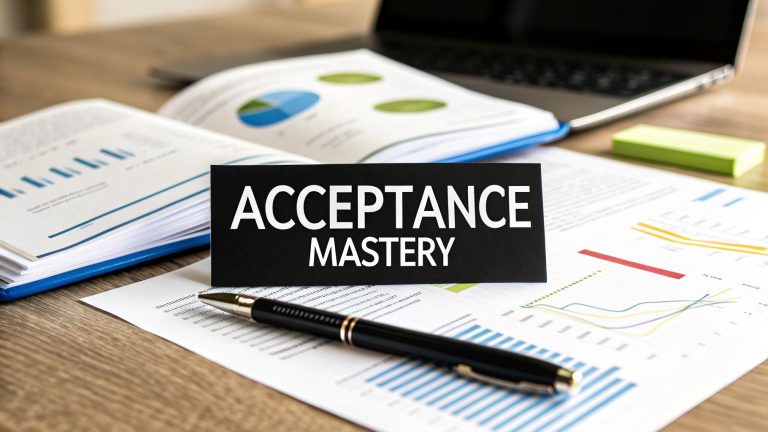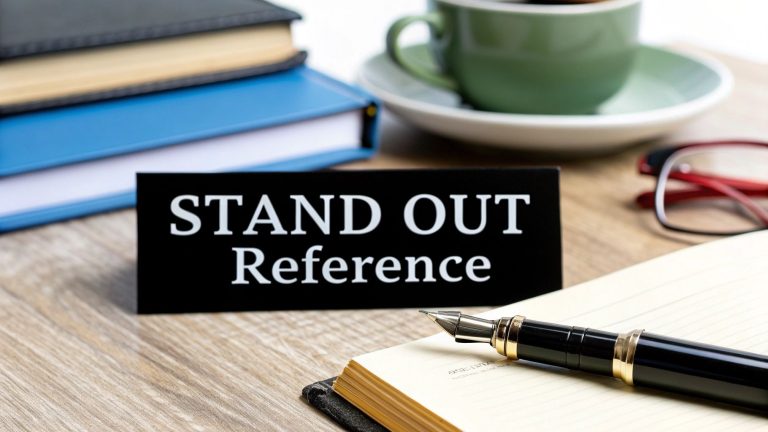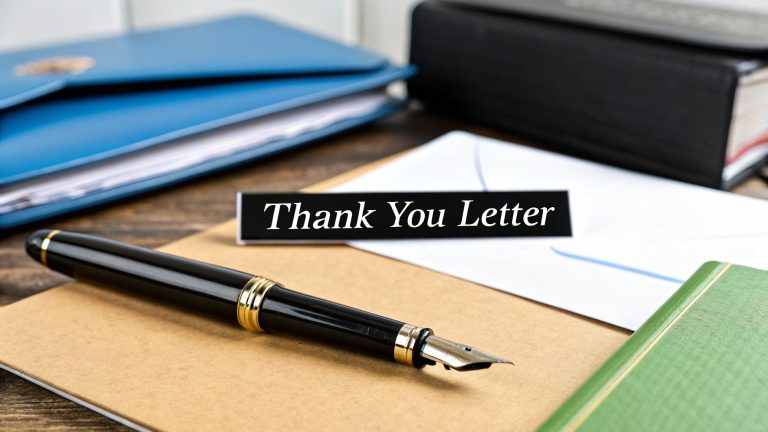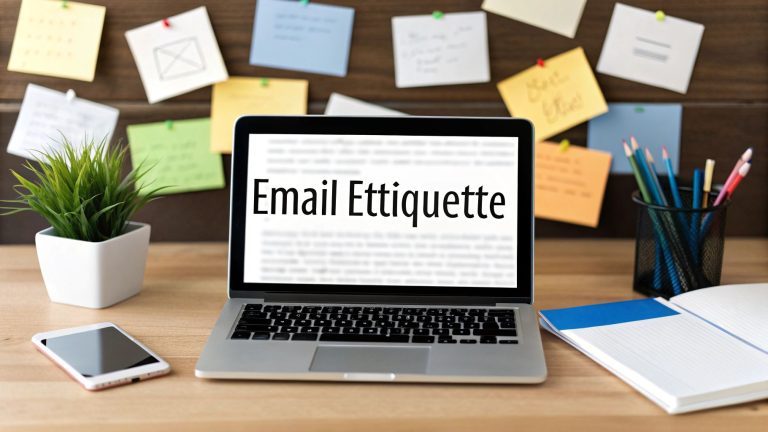Importance of Proper Salutations
Kicking off a letter with the right greeting is like shaking hands with your words before you dive into the main chat. Nailed it and you’re starting on the right foot, mess it up and you might as well have just flipped them the bird. Using the right salutation shows you’ve got respect for who you’re talking to and that you’re clued into why you’re writing.
Differentiation in Formal and Informal Salutations
Figuring out when to use your Sunday best and when to go with something more laid-back is key to making your letters hit home. It all starts with what you say at the top.
Formal Salutations: These are your go-to for when you’re wearing your business hat or trying to impress your boss’s boss. Keep it classy, and if you know their name, use it instead of those stiff and stuffy “Dear Sir” or “Dear Madam” intros. A few classics:
- Dear Mr. Smith,
- Dear Dr. Johnson,
- Dear Ms. Lee,
Informal Salutations: This is where you can relax a little. Writing to friends or family? Drop the formality and get to where it feels friendly and natural. Something like:
- Hi John,
- Hello Jane,
- Dear Mary,
Knowing when to roll out the welcome mat and when to keep it comfy casual ensures your message connects the way you want it to.
| Formal Salutations | Informal Salutations | |
|---|---|---|
| 1 | Dear Mr. Smith, | Hi John, |
| 2 | Dear Dr. Johnson, | Hello Jane, |
| 3 | Dear Ms. Lee, | Dear Mary, |
Get the right salutation under your belt and you’ll be laying the groundwork for strong connections, whether you’re in a boardroom or your buddy’s backyard (StudySmarter).
Formal Letter Salutations
Writing formal letters? You gotta nail the opening line. Start with a bang by using proper greetings. They’re all about showing you respect and professionalism. Let’s jump into how you can give your letter that personal touch.
Addressing Recipients by Name
Getting personal with your greetings can make a world of difference. Use the recipient’s name, and it ups the respect factor. It transforms your letter from generic to genuine, especially in formal settings like job hunts or business chats.
Examples:
- “Dear Mr. Smith,”
- “Dear Ms. Johnson,”
- “Dear Dr. Brown,”
- “Dear Prof. Davis,”
Out here in the U.S., we love our dots with titles (“Mr.,” “Ms.”). Across the pond in Britain? Not so much (“Mr”, “Ms”). So know your audience and keep it culturally correct.
Avoiding Generic Salutations
Skip the cookie-cutter greetings if you’re aiming to impress. Got a name? Use it. “Dear Sir” or “Dear Madam” might as well be saying, “I couldn’t be bothered.”
Examples to Avoid:
- “Dear Sir,”
- “Dear Madam,”
- “To Whom It May Concern,”
Generic salutations give off lazy vibes and can totally tank your message. Show you care by getting the name right.
Table: Salutation Examples
| Situation | Good Option | Bad Move |
|---|---|---|
| When you know it’s Mr. Green | Dear Mr. Green, | Dear Sir, |
| When it’s Ms. Parker | Dear Ms. Parker, | Dear Madam, |
| Talking to a doctor | Dear Dr. Mitchell, | |
| Chatting with a professor | Dear Prof. Harrison, | |
| Someone unknown (last resort use) | To Whom It May Concern, | Dear Sir/Madam, |
Nailing the right greeting is about respect and shows you mean business. You get noticed positively, setting up your message for a smooth reception. It’s all in the details!
Informal Letter Salutations
Writing informal letters? Your opening line is like a friendly handshake. It sets the stage for your chat and lets the person on the other end know you’re easygoing and ready to connect.
Casual Greetings for Familiarity
When you’re dropping a note to someone you know, simple is best. Skip the stiff stuff and let your personality shine through. You don’t need to stick to any fancy rules here. Here’s some go-to ways to start:
- Hi [Name],
- Hello [Name],
- Hey [Name],
- Dear [Name],
- Hi there,
Your choice depends on how well you know them and how you want to come across. First names are your best bet, and you can even toss in something like “Dear buddy” for a more personal touch.
Tailoring Salutations to Relationship
Picking the right opener is about knowing who you’re chatting with. Here’s how to make sure it fits:
- Close Friends and Family:
- Hi [Nickname],
- Hey [Name],
- Hello [Family Member (e.g., Sis, Mom)],
- Acquaintances or New Pals:
- Hi [Name],
- Hello [Name],
- Casual Work Connections:
- Hey [Name],
- Hi [Name],
Examples:
- For a buddy:
- Hey Jess,
- Hi Bestie,
- Hello Pal,
- For someone new:
- Hi Alex,
- Hello Emily,
- For someone you know from work:
- Hey Chris,
- Hi Taylor,
These openings make your letter feel cozy and fit just right with how you know the person. Think about who you’re writing to and why, and pick a greeting that matches up.
| Context | Salutation Examples |
|---|---|
| Close Friends/Family | Hi [Nickname], Hey [Name], Hello [Family Member] |
| Acquaintances/New Friends | Hi [Name], Hello [Name] |
| Casual Business Contacts | Hey [Name], Hi [Name] |
Cultural Considerations in Salutations
Cultural Influences on Salutations
How you start and finish your messages can change a lot depending on where you’re sending them. Around the world, the way people greet each other and say goodbye varies quite a bit, influenced by traditions and norms. It’s pretty important to get a grip on these cultural touches, especially when you’re trying to be professional.
Down in Latin America, you might hear folks saying things like “Saludos” or “Un abrazo.” These greetings show a friendly and warm vibe. People over there don’t take things too stiffly. On the flip side, in the UK, sticking to more reserved choices like “Best regards” or “Sincerely” can be a smart move since they dig a formal touch.
In Nigeria, emails often end with religious flair, like “Stay blessed.” These closings carry some serious weight and feel like little prayers. Such sentiments pop up in both English and local languages there, showing just how much culture is wrapped up in the words we choose
| Region | Common Salutations | Remarks |
|---|---|---|
| Latin America | Saludos, Un abrazo | Personable, informal vibe |
| UK | Best regards, Sincerely | Reserved and formal |
| Nigeria | Stay blessed | Religious with cultural significance |
| France | Belle journée (Have a beautiful day) | Informal among millennials |
Variations in International Greetings
Greetings shift not just by culture but by who’s talking, like different age groups or personal tastes. Younger folks might throw in a breezy close, while older ones could keep it classic.
In the glitzy world of Hollywood, someone might wrap an email with “LTD” for “Living the dream,” showing off some laid-back, industry lingo. Meanwhile, a chef in Kenya might sign off “Eat well,” giving a nod to local flavor over global norms.
Research highlights that using someone’s first name along with digital touches like photos in emails can change the game in business chat. Mess up these personal touches, and it can throw rapport off balance, messing with customer satisfaction and future loyalty.
Getting these little variations right means your message hits the mark with whoever’s reading it, matching their cultural and personal vibe. Paying attention here can seriously boost how well your words land across different cultural backgrounds.
Common Salutation Mistakes
Kicking off your letter with the right words sets the vibe of the whole message. But slipping up, especially if you’re new to writing letters, is surprisingly easy. Here are a couple of goof-ups you might want to sidestep when crafting those salutations.
Overly Formal Salutations
Using super stiff and formal openings can make your letters sound like they were written in a time machine. If you’re reaching out to someone you’re supposed to know, it’s best to keep it less chilly. Generally, in English letters, you aim for just the right mix of formal yet friendly, that Goldilocks zone.
Some common ones to watch out for:
- “Dear Sir” or “Dear Sirs”: Yep, these are technically on point, but they come off as stiff, especially in the U.S. As per the folks over at UsingEnglish, “Dear Sir/Madam” is a tad less prim, but remains a frequent flyer.
- “Dear Title + Full Name”: Popular in some places, rare in English-speaking corners (UsingEnglish).
| Salutation | Context | Formality Level |
|---|---|---|
| Dear Sir/Madam | Someone you don’t know | High |
| Dear Sir or Madam | Mystery person | High |
| Dear Mr. John Smith | You know them | Medium |
Whenever you can, just stick with their name. Like, “Dear Mr. Smith” or “Dear Ms. Johnson”.
Generic or Incorrect Greetings
One of the big traps in letter-writing is picking greetings that are a bit “meh” or just plain wrong. Generic ones can make your letter come off as a cookie-cutter job, while flubbing the greeting can tick someone off or botch the whole letter.
Generic greetings to steer clear of:
- “To Whom It May Concern”: Feels cold and a bit like you didn’t try.
- “Hello Everyone” or “Hi Team”: Too much on the casual side for a formal note.
Incorrect greetings that flunk the mark:
- “Dear CEO”: Wrong way to address and not typical in English-speaking circles (UsingEnglish).
- Mixing up titles and names: Like saying, “Dear Mr. Dr. John Doe”. A head-scratcher.
| Incorrect/Generic Salutations | Better Options |
|---|---|
| To Whom It May Concern | Dear [Full Name] |
| Hello Everyone | Dear Team, [Specific Name] |
| Dear CEO | Dear [Recipient’s Name] |
Keep these in mind, and you’ll kick off your letter on just the right note, setting the stage for whatever comes next.
Email Greetings Best Practices
Nailing those email openings can totally change how people see you and your message. Get it right, and you’ll come off looking sharp and ready to nurture those connections. Here’s the scoop on making your email greetings stand out and really appeal to the folks on the receiving end.
Crafting Professional Email Salutations
So, about crafting those intros: It’s all about the details – grammar, punctuation, and just the right dose of formal flair. Keeping it polished shows respect and class. Here’s what you should have on your radar:
- Titles Matter: If you’re going formal, slap on the proper title plus last name (like “Dear Mr. Smith” or “Dear Dr. Johnson”). Just remember, if you’re the American way, put a period after titles (e.g., “Mr.”), and if you’re going the British way, just let it be.
- Ditch the Bland Stuff: Sure, “Dear Sir” or “Dear Madam” sounds proper, but if you know who’s on the other end, use their name. It adds that personal touch which feels a lot more respectful.
- Mind the Punctuation: Whether it’s a comma or a colon, just depends on how tight you want to play it. Commas are chill; colons mean business: “Dear Mr. Smith,” or “Dear Mr. Smith:”
- Capitalize Right: Start with caps on both the opening word and their name. Think “Dear Ms. Williams,” and you’re golden.
Tailoring Salutations to Recipients
Picking the right tone can be game-changing. Whether it’s super formal, a mix, or all-out chill, choosing the best greeting sets the vibe (StudySmarter).
- Formal Emails: Keep it business school if you’re dealing with office, academic, or professional scenarios. Use “Dear [Title] [Last Name],” like “Dear Prof. Brown,”. If you’re not sure about names, go with “Dear Sir or Madam,”.
- Semi-formal Emails: When it’s slightly more relaxed but still respectful, try “Hi [First Name],” or “Hello [First Name],”.
- Informal Emails: For the friendly exchanges, a casual “Hi [First Name],” or just plain “Hello,” does the trick.
| Recipient Type | Formality | Example Salutation |
|---|---|---|
| Business/Professional | Formal | Dear Mr. Roberts, |
| Academic | Formal | Dear Dr. White, |
| Semi-professional | Semi-formal | Hello Ms. Clark, |
| Casual | Informal | Hi John, |
Remember, keeping these tips in mind helps guarantee your email greetings hit the mark, making your messages clear and professional.
Check out our letter format guide to catch up on your letter structuring guidelines and how to address the letter.




